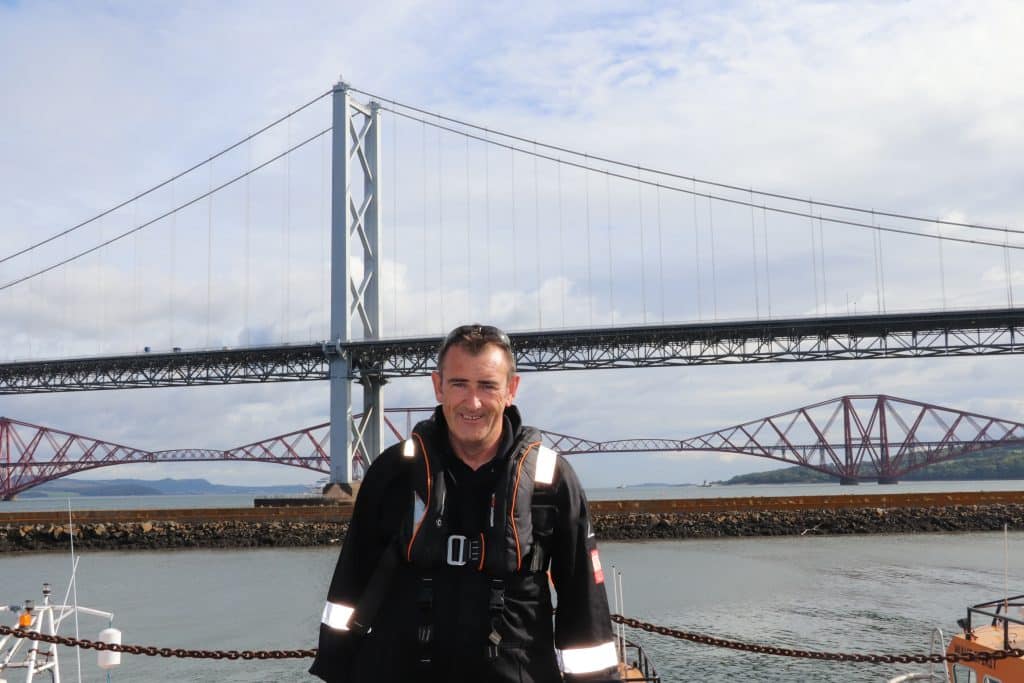Stewart Gregory FIBE, DB Eng is an experienced Vice President of Innovation that has worked for many years in the maritime, defence and aerospace industries.
After 18 years at Survitec, where he successfully took the Seahaven (a 1060-person inflatable lifeboat) from concept to certified commercial product, Stewart joined Zelim as Chief Operating Officer in 2023 to lead the commercial roll out of the company’s lifesaving product suite.
We sat down with Stewart to ask him about his role and to get his views on the industry and how new technologies are shaping the future of search and rescue.
Can you tell us about your background and why you decided to join Zelim? What attracted you to the company initially?
Marine engineering is my first discipline and before joining the industry I spent 23 years as an engineer in the Royal Air Force working in survival and search and rescue. I initially joined Survitec as Defence Technology Director and held various other positions, spending the last 10 years as VP Innovation and New Product Development and heading up the innovation team.
I first got to know Sam Mayall, the founder of Zelim, a few years back and we had several in-depth conversations about the marine safety sector and how to best approach introducing new technologies. We got back in touch last year, when Zelim were looking for someone to head up commercialisation of their product suite.
It was the right time in my career too. I was open to new challenges and really believed in what Sam and the team were trying to achieve, which was truly new and innovative. Radical breakthroughs in the use of autonomy and AI in any sector often need a small, agile innovator to think differently and break the mould.
I came onboard as Chief Operating Officer to help with the operational side of the business and, critically, with transitioning the company smoothly from R&D to commercial delivery and reaching their target markets; defence, aerospace, marine, offshore and cruise.
How does your experience at Survitec help you to support Zelim as an innovative startup moving from R&D to commercial delivery?
I can help them to think big! I have taken new products right through from research and ideation to production and launch. Understanding the regulatory framework and helping to influence and change standard practice to accommodate groundbreaking, market-ready technology is also an important element that I can support the team with.
Can you tell us more about what you’ve been working on at Zelim so far?
The team and I have done a lot of work on design integrity and quality assurance, with a view to working towards type approval. Value engineering has been another area of focus and we’ve had our noses to the grindstone getting manufacturing costs grounded.
We have also looked closely at the manufacturing process and put measures in place to ensure a robust supply chain going forward. Zelim has done a lot of prototype testing to qualify their products and demonstrate, through validation and verification, that the equipment is fit for purpose. I have been wrapping the safety cases around these and laying the groundwork for the shift in approach that is needed as we switch to commercial delivery.
Since joining the company, what’s your proudest moment?
Putting the SWIFT rescue conveyor through comprehensive testing in the environmental training tank at Fleetwood Offshore Survival Centre was a good day. We put over 200 people through the rescue process with different clothing, in varying wave conditions etc. It goes to show how the design integrity work can lead to successful demonstrations – it was the first time that SWIFT had been put through full qualification testing and it passed with flying colours!
I am hoping for another proud moment soon as we progress to type approval of the SWIFT conveyor, against IMO guidelines set out in MSC.1/Circ.1447, from a leading classification body. Hopefully, there should be some positive news about that within the next few months!
How have you seen safety technology develop over your years in the business? How do you see it moving forward into the future?
Arguably, most innovation starts in the automotive industry, then crosses into aerospace and marine, but now we are starting to see a lot more innovation starting in the marine sector.
These innovations are largely aimed at environmental protection, with clean fuels and uncrewed, remotely-operated vessels as just two examples. Innovation around lifesaving appliances is less talked about, but it is happening. Safety equipment absolutely must be reliable and work effectively when you most need it, and I am sure we will see much more safety-related innovation coming out of the marine sector in the future.
The use case for Zelim’s technology arguably spans the entire maritime sector. Specifically, how do you see the technology’s relevance for the cruise shipping sector?
Zelim is truly pushing the boundaries of safety technology. Rather than just manufacturing one, new and innovative product, they are creating a complete safety ecosystem with their ‘find, recover, protect’ mantra, that aims to solve all the challenges of keeping people safe at sea.
The cruise industry marries the shipping sector with tourism. To date, however, man overboard detection, that notifies the crew the moment someone falls overboard, is not legislated – cruise ships do not have to have it. Rather, they rely on cameras and CCTV around the ship.
As a small company we don’t have a voice at the IMO, but we need to be part of a working body. Zelim has therefore recently joined CLIA (Cruise Lines International Association) as a silver executive partner, so that we can start to work with them as an industry voice to develop awareness of the benefits of new technologies to the sector, as well as to socialise this tech through relevant forums and class and flag societies.
We need to ensure that this doesn’t become a ‘race to the bottom’. Cruise ships are legally required to have lifeboats, life rafts etc. but they would be even safer with equipment like Zelim’s onboard.
How is Zelim set to address the cruise industry’s requirements and criteria?
Zelim is bringing a new approach and modern techniques and technology into the marine safety world. It’s all about speed of rescue and the reduced risk to human life that these technologies enable.
Our AI-enabled casualty detection, tracking and alerting solution, ZOE, has been proven in independent testing to spot a human head from 300 metres away in rough weather, day or night, storm or fog. This increases when you add camera zoom with ZOE’s automatic slew to cue function. ZOE has been deployed in offshore energy as an automatic man overboard detection and alert system, providing a safety net around offshore installations and vessels.
The SWIFT conveyor, operated by a single button, has been proven on trials to rescue a person from the water in under 10 seconds and has been tested up to sea state 4/5 in 46 knot winds.
The uncrewed, remote-operation mode of our GUARDIAN fast rescue craft, the first of which will launch in spring 2024, has instantaneous launch capability and a transit speed of 35 knots. It can be first to arrive on scene, cutting down the time to rescue and not risking the lives of other mariners to save someone.
These three systems have been designed to work together and cover not just a part of the rescue process, but the entirety of it. I am excited to be working with the Zelim team towards our first commercial deliveries.

